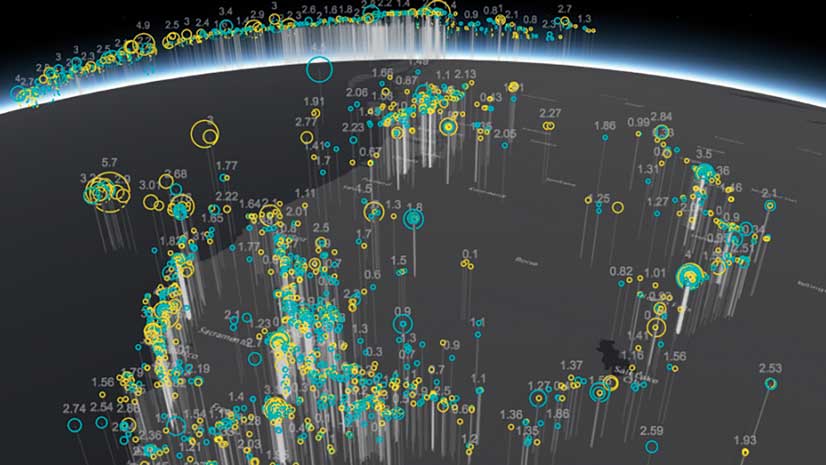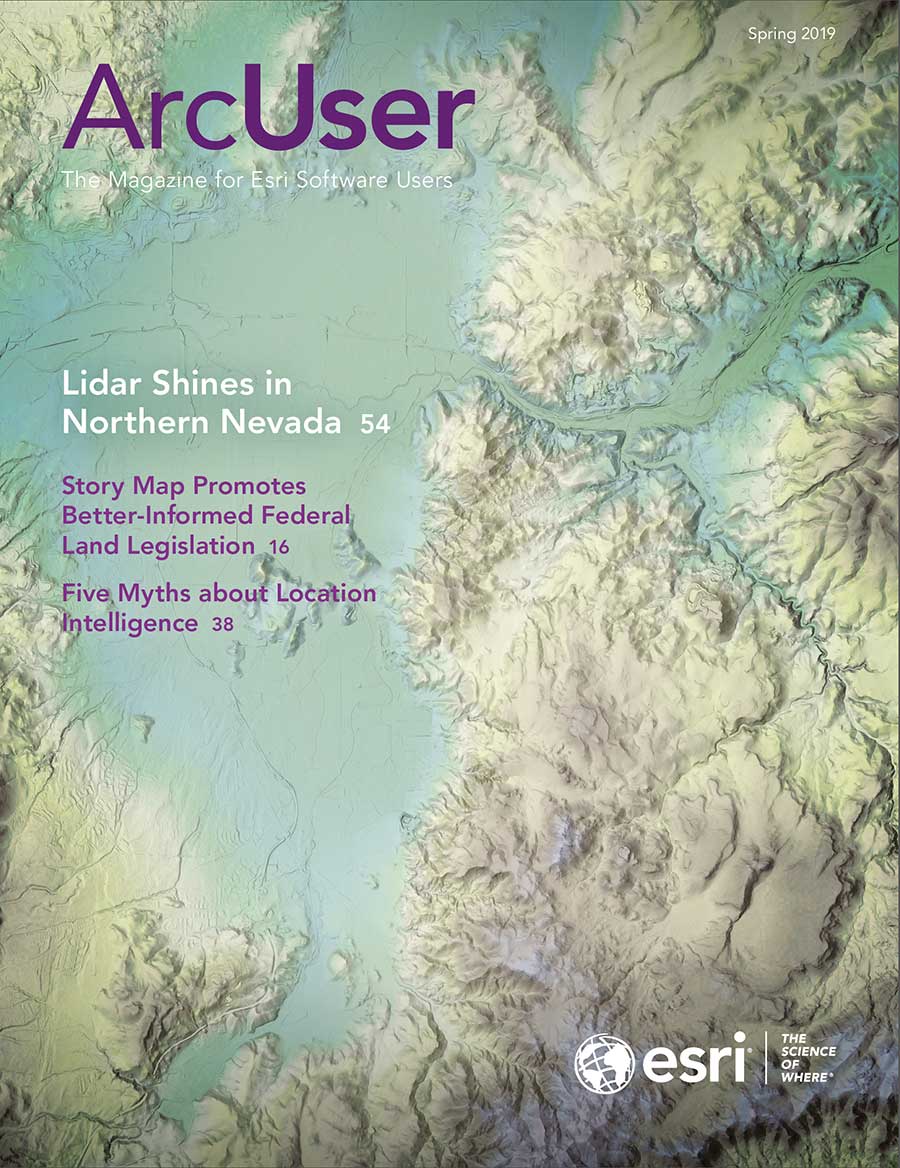If you follow the tech industry, you’ve probably encountered the term location intelligence, but what does it really mean?
- For some, it’s about technology like GIS and mapping software.
- For others, it’s about analysis and spatial data.
- And for others still, it’s a business concept that refers to improved performance through better spatial awareness.
None of these are entirely incorrect. But they are somewhat incomplete. As a strategist, I spend a lot of time talking to people about their location intelligence questions, as well as clarifying some of their misconceptions. Here are five of the most common.
Myth 1: It’s just GIS rebranded.
“Location intelligence—isn’t that just GIS?” It’s a common refrain, often made by a puzzled but well-intentioned IT manager. It’s natural to assume that there’s a strong connection between location intelligence and GIS. For years, many GIS software vendors have claimed to provide a platform for location intelligence. In fact, a Google search on the term returns dozens of pages focused squarely on the technology of GIS.
The truth is that GIS and location intelligence are distinct concepts. GIS refers specifically to technology. It’s the software and hardware behind digital mapping and geospatial analysis. Think of GIS as the hard goods of the geospatial industry.
Location intelligence, on the other hand, refers to an ability—not a specific technology. An ability is a proficiency. It’s a capacity to do something. The word intelligence itself is defined as “the ability to acquire and apply knowledge and skills.” Location intelligence extends that definition into the realm of geography and business.
Put simply, location intelligence is the ability to derive business insights from geospatial information. Those with well-developed location intelligence abilities use GIS, maps, data, and analytical skills to solve real-world problems, specifically business problems. This is an important distinction. Location intelligence is primarily a business term that refers to solving business problems. GIS may be the technical foundation of location intelligence, but it’s not the same thing.
Myth 2: It’s not an organizational capability.
If location intelligence is an ability, then you might assume that it’s a uniquely individual one. After all, it’s people that use the software, perform the analysis, and make the maps. Organizations, on the other hand, are simply the beneficiaries of these human abilities. Isn’t it misleading to suggest that an organization—as a whole—possesses location intelligence? After all, what is an organization but a collection of individuals.
In truth, organizations do possess a distinct level of location intelligence. For individuals, location intelligence has a lot to do with understanding geography and business analysis and having access to tools to solve problems. For organizations, location intelligence is more about channeling and integrating the abilities of individuals to serve the interests of the organization. This is done by establishing effective location strategies, business practices, governance processes, and cultural norms. The best organizations then bake those elements right into the core business. In management consulting speak, they establish location intelligence as an organizational capability.
For instance, the British multinational oil and gas company BP took this approach in building its One Map program. Establishing One Map meant looking at how location intelligence could be leveraged across all BP’s lines of business, including oil and gas exploration, production, transportation, refining, and retail. BP recognized that enabling such a large and diverse business through location intelligence required holistic thinking. It would require establishing a technology platform, governance, data-sharing practices, business applications, IT support, workflow automation, performance management, and branding and marketing. Essentially, BP elevated location intelligence to a true organizational capability.
Myth 3: It’s just analytics with maps.
Most literature discussing analytics unfortunately skips right over the concept of location, so it’s no wonder that the analytics strategies of most organizations that I encounter do the same thing. A common perception is that—aside from seeing your work on a map—location doesn’t really add much to an analysis. It’s a complementary visual at best.
In reality, when you factor location into analysis, you open up a world of opportunity. Specifically, you make it possible to tackle a unique set of problems. Think about an offshore oil company trying to predict and monitor sea ice activity. Rogue icebergs or shifting ice floes, driven by global climate change, pose a tremendous risk to the safe operation of offshore oil rigs and shipping vessels. Mitigation of sea ice risk is inherently about predicting and its monitoring the location of sea ice: its size, shape, and speed and the consequences if it impacts an oil platform. This is a location-based problem that involves more than just plotting a location on a map. Making accurate predictions and formulating the best mitigating steps requires that an organization start the analysis with location as the core component.
Location intelligence lets you answer questions you couldn’t answer in the absence of a geospatial context. And that goes far beyond plotting points on a map. Investing in tools, knowledge, and organizational practices is key to cultivating this ability.
Myth 4: It’s only for specialists.
Another common assumption is that anything “geo” is for experts. That includes geography, geomatics, geospatial analysis, and GIS. The sense is that geo is complex and a niche discipline. A map might appeal to a casual user, but real analysis is done by and for the benefit of professionals.
The truth is that geospatial tools and data are more accessible and intuitive than ever, which has resulted in a corresponding rise in nontraditional users. A survey of the geospatial analytics market published by Geospatial World in 2018 indicated that the fastest growing segments of geospatial technology are web and mobile GIS. A lot of the reasons for this trend are the ease-of-use improvements of the technology. This has resulted in an increase in adoption by nontraditional users. More than ever, we’re seeing data scientists, policy makers, political analysts, and fieldworkers leverage location-based tools. We’re also seeing many businesses integrate location intelligence at the executive level.
What this means for organizations is that to do great things with location intelligence, you don’t have to be an expert. In many cases, you don’t necessarily have to employ an army of geospatial specialists. A better strategy is to augment your existing business functions with easy-to-use and fit-for-purpose tools and technology.
Myth 5: It’s not strategic.
A major oversight when it comes to location intelligence is its perception as a strategic enabler. An organization creates a business strategy to define how it will compete and win against its peers. A strategic enabler is any capability that significantly supports the strategy. Many organizations struggle to understand how location intelligence contributes in this way. How can location intelligence help organizations win?
The answer lies in understanding how a strategic advantage is created. A strategic advantage comes from having something valuable that would be difficult for competitors to replicate. A great brand, low-cost structure, and proprietary intellectual property are examples of high-level strategic advantages. These are potent assets because they protect the competitive position of the organization.
Similarly, anything that discourages customers from switching to competitors could be considered a strategic enabler. Rogers Communications in Canada uses location intelligence to improve how calls are routed to its service operators. Matching callers to agents is a notoriously difficult problem. To predict which agent is best suited to respond to a call, Rogers needs to consider many factors. These include a customer’s intention and history as well as an agent’s qualifications and experience. The company also needs to know the location of the caller to determine what phone or Internet issues might be relevant. All this information feeds into an artificial intelligence (AI) engine that predicts the nature of the call and routes it to the best agent to respond.
By automating this, Rogers has significantly reduced service time and improved customer retention rates. At a strategic level, it has helped Rogers protect revenue and its competitive position through superior customer service. If you’re ever challenged with the comment that location intelligence isn’t strategic, think about how an organization competes and all the advantages location-based insights can create.





